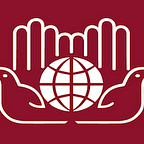Better Shelter: Delivering Feasibility
Imagine being able to set up a camp-site in four hours. One that, unlike the standard cotton or polyester that flies with the air if conditions become harsh, is hard-shelled, weatherproof, and made from recycled plastic. Yes, unimaginable to many, but not to Better Shelter. The unimaginable: imagined and created.
Better Shelter, the Swedish social enterprise behind the housing, is partnered with the IKEA Foundation and the United Nations Refugee Agency (UNHCR). Together, improving the living conditions for people in need of temporary shelters during times of crisis. Since the enterprise’s formation in 2010, they have provided over 40,000 shelters in more than 40 countries — across Europe, Africa, South America, the Middle East, and Asia (Better Shelter).
When redesigning the future of refugee camps, the company knew one thing: “refugees often spend several years — even generations — in camps” (Better Shelter). It became apparent that a redeveloped structure for refugee camps would have to account for durability since the standard cloth tents do not last much longer than six months (Arch Daily). The flat-pack emergency shelters made of polymer panels with thermal insulation are installable with nothing but a set of four hands within four hours. The temporary homes can last up to three years; and, even when the panels start to degrade, they can be put back together with materials such as mud bricks or iron (The Guardian).
Their creation of reliable and redesigned camps deserves much merit. In 2016, Better Shelter received the prestigious Beazley Design Award from the Design Museum in London, triumphing over David Bowie’s album and a robotic surgeon (Dezeen). It seems challenging to defeat robots and a legendary artist, but not for Better Shelter. The award symbolizes change and extensive design — two ideals that Better Shelter has extensively made present in their works.
Saffa Hameed, who stayed at the Al Jamea’a refugee camp in Baghdad told UNHCR in 2015, “If you compare life in the tents and life in these shelter’s, it is a thousand times better.” Others like Hameed have praised the enterprise for creating tents that ensure security and comfortability. The temporary 17.5 meter-squared homes are designed to fit a family of five, with a solar-paneled roof that provides the home with electricity for up to four hours (The Guardian).
For any start-up enterprise, it becomes possible that the shortcomings of the design are only discovered after usage. It seems like this became the case for Better Shelter in 2015. As the United Nations High Commission for Refugees reported, the shelters were vulnerable to fire. After this report, the products were kept in depots by Better Shelter until the problem was addressed (Dezeen).
Instead of denying the reported concerns, Tapio Vahtola, the leader of the Strategic Partnerships at UNHCR, accepted the criticism and said, “The very nature of innovation and new product development project implies improvements are required along the road …” (Dezeen). The company appreciated the constructive criticism they received from other NGOs and worked to improve their product upon these comments. According to Dezeen, Better Shelter’s new panels are lighter and stronger. The company has also set spacing guidelines. All the new improvements were accounting for reports of fire vulnerability.
In June 2015, the company deployed 16,000 shelters to earthquake-ridden Nepal. Of these, 50 were used by Médecins Sans Frontières (MSF) as clinics. The enterprise’s design made it possible for MSF to join multiple shelters together, giving the team the necessary space to properly treat the people of Nepal (Better Shelter).
Better Shelter’s acceptance to change is what makes them a leader in social enterprise. Their transformative nature distinguishes the company and is one of the main reasons for their success. Other reasons include the fact that they deliver Shelter that is safe, private, and comfortable. Essentially this instinctually-innovative enterprise delivers, what is: Better Shelter.
For more information on Better Shelter, hear from Johan Karlsson, Managing Director, Better Shelter, who spoke on the Design Dialogue I: From Camps to Communities at the recent Design for Humanity Summit II at Fordham University’s Lincoln Center Campus HERE.
Written By Leonit Dedushaj, Marketing and Communications Intern, Summer 2019
About the IIHA
The Institute of International Humanitarian Affairs (IIHA) prepares current and future aid workers with the knowledge and skills needed to respond effectively in times of humanitarian crisis and disaster. Our courses are borne of an interdisciplinary curriculum that combines academic theory with the practical experience of seasoned humanitarian professionals. The IIHA also publishes on a wide range of humanitarian topics and regularly hosts a number of events in the New York area, including the annual Humanitarian Blockchain Summit and Design for Humanity Summit.
For media inquiries, please contact: Camille Giacovas, Communications & Research Officer, IIHA cgiacovas@fordham.edu
